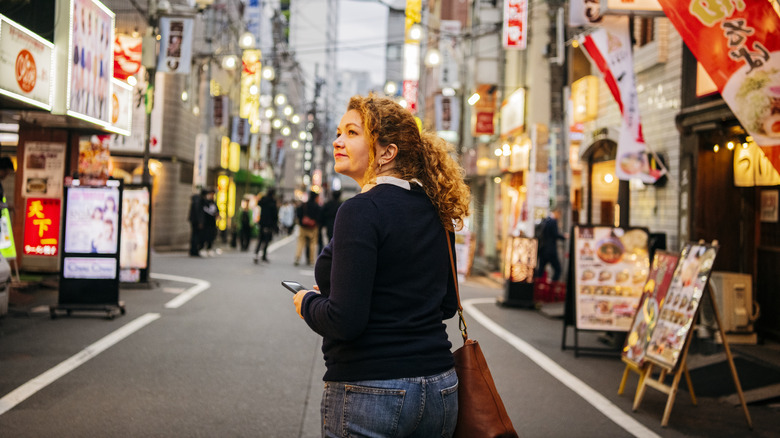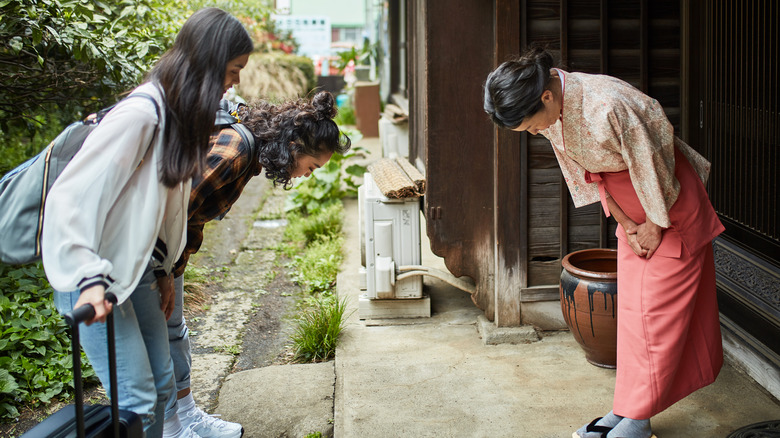The Common Greeting Tourists Visiting Japan May Want To Avoid
Picture this: You're meeting someone new and need to introduce yourself. In most cases, your first instinct is to stretch out your hand and try to shake theirs, right? After all, handshakes are common around the world, and synonymous with respect and professionalism. From business settings to the most laid-back social gatherings, people don't necessarily give handshakes a second thought.
However, that's not always the case in Japan. While travelers from the West are quick to interlock hands with strangers, Japanese culture has a more subtle way of showing respect, gratitude, and appreciation without the need for physical contact — especially if it's with someone you've just met — and it's all through a slight bow. A few instances in which it's common to bow include saying hello or goodbye, showing thanks, apologizing to someone, offering congratulations, and asking for a favor.
While there isn't an exact reason as to why or when the Japanese adopted this custom, there are reasons to believe it stems from when Buddhism arrived in the country around the fifth or sixth century. Since the samurai — one of the most historically respected groups in the country — practiced Zen Buddhism, it's believed that they popularized the teachings and costumes, including the practice to bow. Modern residents of Japan won't be shocked by tourists from around the world offering handshakes, but it's still generally more polite to take a cue from the locals and bow when you greet them instead.
Learning how and when to bow
Not all bows are created equal, and there are certain instances that require different levels of formality depending on who you're bowing to. For example, if you're greeting a friend or anyone who is of similar social standing, a simple nod or "eshaku" bow is enough. The "eshaku" bow requires you to bend forward with your back straight at a 15-degree angle, keeping your hands on your thighs as they glide along the top of your legs slowly while you incline.
Then, there's the "futsuurei" or "keirei" bow. Commonly used to greet someone who has a higher ranking than you — your boss, for example, or an elder — this type of bow requires you to bend forward at a 30- to 45-degree angle, while your palms glide down your legs slowly. Lastly, there's the "saikeirei" bow. Used to show deep respect, this bow isn't commonly used outside of religious or political ceremonies. This bow is much deeper at a 70-degree angle — and you'll bend more slowly while your palms graze your legs all the way down to your knees. Remain in this position for three seconds before slowly returning to your upright stance.
As for other mistakes to avoid if you're trying to be a considerate tourist when visiting Japan, make sure you don't put your palms together when you bow — this is no longer common outside of worship — and always stop (both walking and talking) before proceeding to bow.

